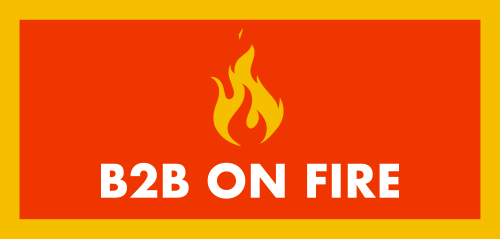3 new B2B studies, 3 new growth hacking strategies
Recently, we attended the IAA’s 2023 Global B2B Brand Summit in New York, where more than two dozen top global marketers shared their earned wisdom.
The Summit, themed “B2B on Fire,” served as a launch pad for new research with exciting implications for B2B marketers, including:
1. B2B companies have a nearly $1 trillion opportunity
David Haigh of BrandFinance shared his consulting firm’s first financial valuation of B2B brands,1 which put the brand value of the top 100 B2B brands at $2 trillion. That represents 12% of total business value. By elevating this percentage to B2C levels, B2B brands could collectively increase their brand equity by almost a trillion dollars.
The study revealed that Microsoft has the top B2B brand valuation, beating out other top 10 performers such as Amazon, Accenture, Oracle and UnitedHealthcare. According to BrandFinance, the leading B2B brands share four main characteristics:
- A deeper connection with client executives and board members
- A clear value proposition
- Global consistency
- Employer branding programs
 |
Our take: B2B companies need to seriously reconsider their investment split between brand marketing and demand gen. See our recent article on this topic. |
2. Success in B2B starts with articulating a clear customer value proposition
Jann Schwarz shared a new report from LinkedIn’s B2B Institute, which analyzed more than 2,000 award entries over the last 5 years to determine the most effective marketing campaigns. Surprisingly, they found only 2 of 5 campaigns articulated a clear promise to the customer. The rest focused on product attributes or lofty purpose-driven messages.
Campaigns with clear promises significantly outperformed those without:
+7 pts market penetration
+10 pts market share
+14 pts change in consumer behavior
+19 pts improved brand health
+44 pts long-term brand and sales growth
And, for brands with low budgets, the performance gap was even greater.
 |
Our take: The approach LinkedIn is advocating is fairly straightforward for one-product or one-category brands. For large B2B companies, with a single brand competing in dozens of categories, the approach is a bit simplistic. In our experience, these brands are well-advised to integrate an inspiring brand promise with category-specific promises, employing a message architecture with fixed and flexible modules. |
3. B2B CMOs are evolving into a new role: Growth Orchestrator
In the third study, from media agency EssenceMediacom, B2B lead Tara Fusco revealed these highlights from a survey of almost 200 Fortune 500 CMOs:
- Business growth is becoming a core responsibility of B2B CMOs. More than half say business results (e.g., sales, revenue, margin, market share, ROI) and customer acquisition have become core.
- The center of gravity of the B2B customer experience has shifted from an offline relationship with sales to an online or hybrid experience. CMOs are increasingly asked to orchestrate this.
- Most B2B CMOs are already using AI in a lot of places. The 4 most common: 1) content creation, 2) chatbots, 3) automation and 4) content personalization.
 |
Our take: Marketing departments in B2B companies are shifting from enabling sales to driving customer relationships more directly. The new B2B CMO playbook for marketing growth: 1) know each customer personally 2) inspire them creatively and 3) engage them holistically. |
1 Brand Finance, Global Most Valuable B2B Brands Index, May 2023




 See what they have to say
See what they have to say